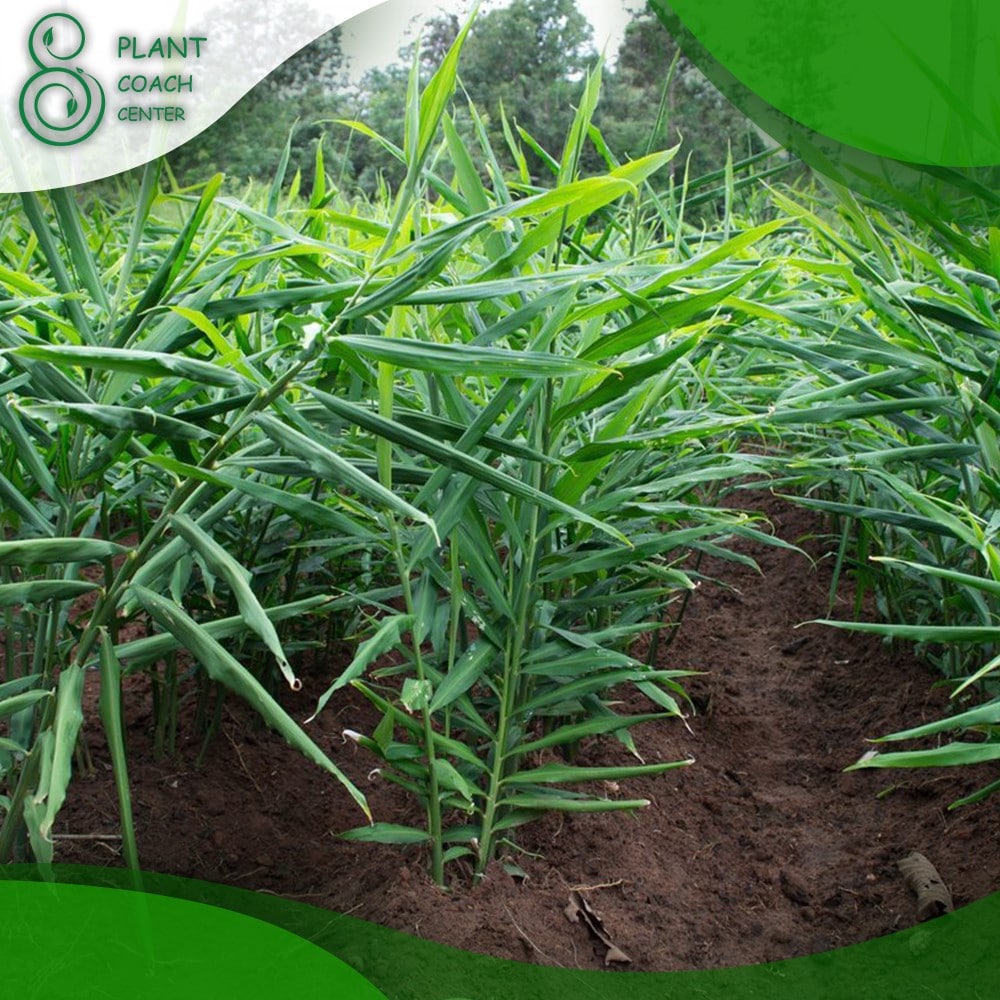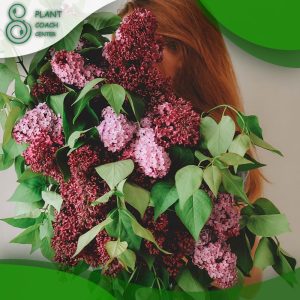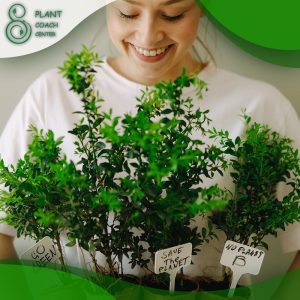When Should I Plant Ginger Root?
Picture this: a warm, aromatic haven right in your own backyard or even snugly nestled on your windowsill. The allure of cultivating ginger, that knobby, flavorful root synonymous with exotic cuisines and soothing teas, has captured the hearts of many gardening enthusiasts. But as with any endeavor, success hinges on timing and know-how.
You might wonder, “When should I plant ginger root?” Fret not, for this article unveils the secrets to ginger gardening mastery. Whether you’re a seasoned green thumb or just dipping your toes into horticulture, understanding the nuances of ginger planting timelines can make all the difference.
From deciphering the optimal seasons for growth to uncovering the hidden gems in the ginger growth cycle, we’re here to guide you through every step. So, grab your gardening gloves and prepare to unearth the wisdom that will turn your ginger-growing journey into a fragrant and rewarding adventure.
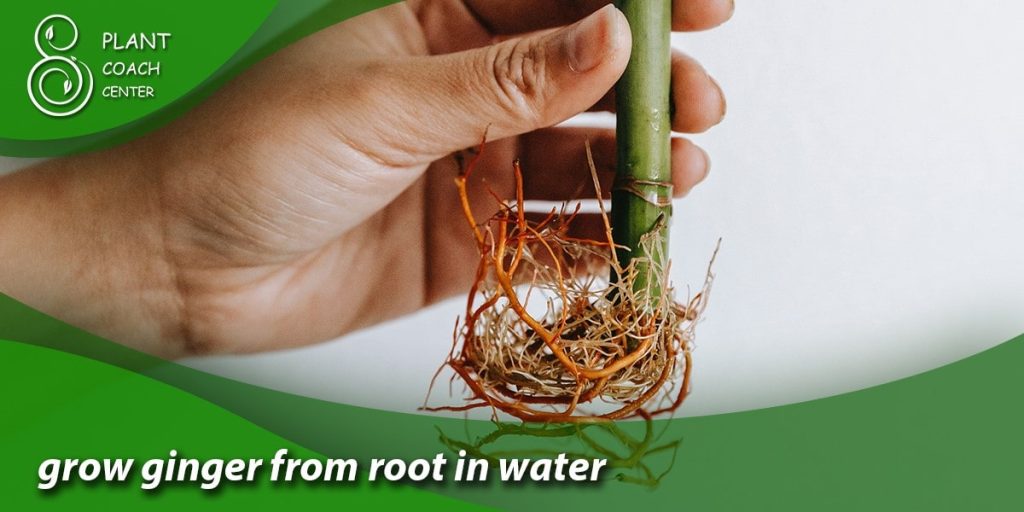
Choosing the Perfect Season
Selecting the right season for planting ginger is akin to setting the stage for a grand botanical performance. The choice between spring, summer, and fall can significantly influence the success of your ginger cultivation. Each season has advantages and considerations, so let’s dive into the nuances.
Spring
As the earth awakens from winter slumber, spring presents an inviting opportunity to kickstart your ginger journey. With warming temperatures and longer days, ginger rhizomes planted in spring receive ample sunlight for photosynthesis, encouraging robust growth. However, be cautious of late frosts that might threaten young shoots. To mitigate this, consider starting your ginger indoors or in a greenhouse, providing a nurturing environment until the frost risk subsides.
Summer
The lushness of summer offers another window for ginger planting, particularly in regions with mild or warm climates. Planting in summer takes advantage of the season’s consistent warmth, which aids in speedy germination and vibrant foliage development. Be mindful of excessive heat – ginger thrives in tropical environments, but too much direct sunlight can scorch its delicate leaves. Providing partial shade and consistent moisture will help strike the right balance.
Fall
For those in milder climates, fall can be a surprising contender for ginger planting. The fading warmth of summer still lingers, creating a gentle environment for ginger to establish its roots before winter arrives. Planting in fall allows the rhizomes to acclimate and get a head start in the following year’s growing season. However, ensure you bury well ahead of the first frost to allow sufficient time for root development.
Cracking the Ginger Growing Timeline
Embarking on a journey to grow ginger is akin to orchestrating a symphony of growth stages. From the moment you plant the rhizome to the satisfying harvest of aromatic roots, understanding the ginger growing timeline is essential for a bountiful yield.
Planting Phase
The ginger growing timeline begins with the planting phase. Ginger is usually planted in shallow trenches or containers after selecting the perfect rhizomes and preparing the soil. Once produced, the rhizomes will gradually send out shoots, the first signs of successful germination. This phase typically lasts around 2 to 3 weeks, and it’s crucial to provide consistent moisture during this time to support the delicate young plants.
Vegetative Growth
As the shoots develop, the vegetative growth phase takes center stage. During this period, which can span 3 to 4 months, ginger plants focus on leaf production. Lush, vibrant leaves will unfurl, capturing sunlight to fuel photosynthesis and promote healthy root development beneath the soil. Adequate water, nutrients, and protection from extreme weather are essential to ensure robust growth.
Rhizome Formation
Around 8 to 10 months after planting, the ginger plants transition into the rhizome formation phase. This is where the ginger roots we commonly use start to develop. As the leaves begin to yellow and die back, the energy stored in the rhizomes reaches its peak. Reducing watering during this phase is crucial to allow the rhizomes to mature correctly.
Harvesting Time
Patience is rewarded when the ginger plants reach the harvesting phase, typically 10 to 12 months after planting. The leaves will have withered completely, indicating that the plant has focused all its energy on the rhizomes. Carefully dig around the plants to unearth the plump ginger roots, ready to infuse your dishes with their distinctive flavor and aroma.
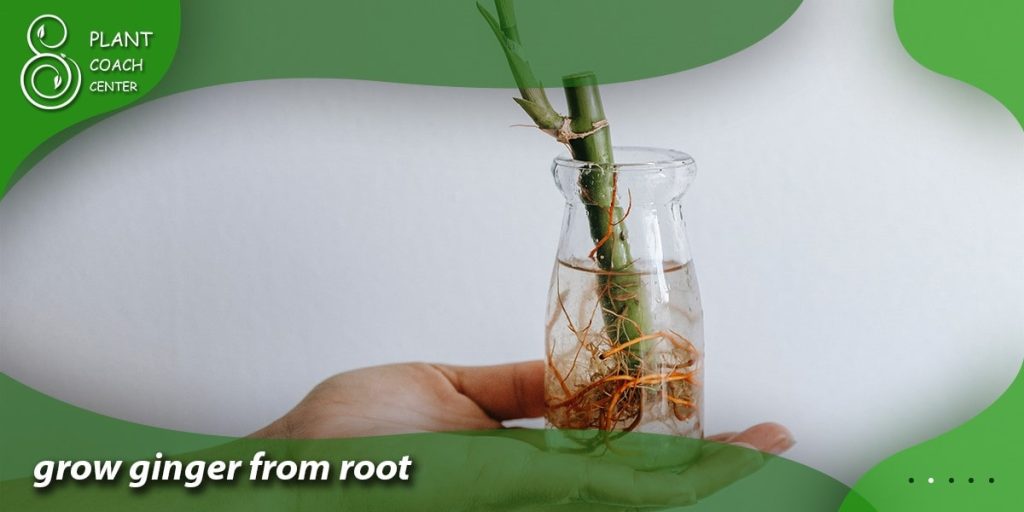
Climate Considerations
Ginger’s journey from a humble rhizome to a flourishing plant is greatly influenced by the climate it calls home. Before you embark on your ginger-growing adventure, it’s essential to consider your region’s climate and tailor your planting schedule accordingly.
Tropical Delight
Ginger will likely thrive year-round if you’re lucky enough to reside in a tropical or subtropical climate. The consistent warmth and humidity provide an ideal environment for ginger’s growth. In these regions, you can often plant ginger outdoors without concern for frost. Whether in the Caribbean, parts of Southeast Asia, or similar areas, you’ll enjoy fresh ginger straight from your garden.
Temperate Zones
For those in temperate climates with distinct seasons, careful timing is crucial. In regions with cold winters, planting ginger outdoors might require some strategizing. Spring and early summer are your best bets as the soil warms up and the threat of frost subsides. However, if you’re determined to grow ginger in colder climates, consider starting the rhizomes indoors or in containers that can be brought indoors during winter.
Greenhouse Advantage
If you’re in a colder climate but have access to a greenhouse, you’re in luck. Conservatories offer a controlled environment where you can mimic tropical conditions, allowing ginger to grow throughout the year. From maintaining the right temperature to adjusting humidity levels, a greenhouse grants you the power to create an optimal habitat for your ginger plants.
Microclimates Matter
Remember the microclimates within your garden or even around your home. South-facing walls, sunny nooks, or protected corners create small pockets of warmth that extend the growing season for ginger. Observing these microclimates and strategically planting your ginger can significantly affect its growth and survival.
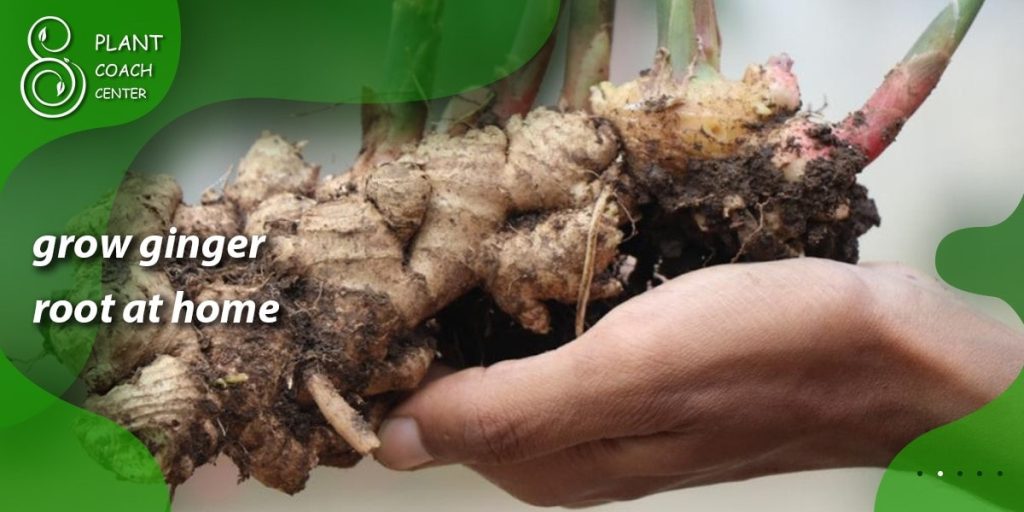
Indoor vs. Outdoor Cultivation
Choosing between cultivating ginger indoors or outdoors is akin to deciding between two distinct landscapes for your ginger-growing masterpiece. Each option has advantages and considerations, making the decision an exciting one to ponder.
Indoor Haven
Opting for indoor cultivation brings the ginger-growing experience right into your living space. This approach particularly appeals to a region with harsh winters or limited outdoor space. Indoor gardening provides more control over temperature and humidity, allowing you to create a tropical haven year-round.
Growing ginger in pots or containers indoors also enables you to monitor and adjust conditions to suit the plant’s needs, ensuring a cozy and controlled environment for optimal growth.
Outdoor Adventure
On the other hand, choosing to grow ginger outdoors connects you directly with the rhythm of the seasons. In regions with suitable climates, outdoor cultivation can lead to larger yields, as ginger plants benefit from natural sunlight, rainwater, and the ebb and flow of the environment. While you have less control over conditions, the symbiotic relationship between your ginger plants and the elements can result in robust growth and a genuine connection to nature’s cycles.
Best of Both Worlds
Consider a hybrid approach by starting your ginger indoors and transitioning it outdoors during the warmer months. This approach gives your ginger plants a head create in the controlled indoor environment before allowing them to bask in the natural elements outdoors. Just ensure you acclimate your plants slowly to prevent shock from sudden changes in temperature and light.
Space and Resources
Another aspect to weigh is the space you have available. Focusing on outdoor cultivation might be more practical if indoor space is limited. Conversely, indoor cultivation might be the perfect fit if you have ample indoor space and enjoy the idea of tending to your ginger plants from the comfort of your home.
Choosing
between indoor and outdoor ginger cultivation depends on your preferences, resources, and local climate. Both options offer unique rewards, allowing you to tailor your ginger-growing experience to your lifestyle and aspirations. Whether you’re creating a lush indoor oasis or embracing the vitality of the outdoors, the journey of growing ginger promises a tapestry of flavors and experiences.
Preparation Pays Off
The journey to successful ginger cultivation begins long before you place the rhizomes in the soil. Adequate preparation is the cornerstone of a thriving ginger garden, encompassing everything from soil quality to rhizome selection.
Soil Selection and Enrichment
Ginger thrives in well-draining, loamy soil that’s rich in organic matter. Before planting, ensure your chosen planting area or pots are filled with soil amended adequately with compost or well-rotted manure. This provides essential nutrients and improves soil structure, allowing ginger’s roots to penetrate and grow without hindrance.
Rhizome Quality
Choosing high-quality ginger rhizomes is paramount to a successful harvest. Opt for plump, firm rhizomes with well-developed “eyes,” the tiny buds from which shoots will emerge. Avoid shriveled or moldy rhizomes, which might struggle to sprout or establish healthy growth.
Pre-Planting Treatment
Some gardeners give their ginger rhizomes a head start by soaking them in warm water overnight before planting. This can help to stimulate sprouting and accelerate the germination process. Additionally, you can dust the rhizomes with a rooting hormone to encourage robust root development.
Spacing and Planting Depth
When it comes to planting, proper spacing, and planting depth are crucial. Plant rhizomes about 6 to 8 inches apart and ensure they’re buried horizontally, with the eyes facing upward, about 2 to 4 inches below the soil surface. This provides adequate room for growth and proper development.
Mulching and Watering
Applying a layer of organic mulch over the planting area helps retain moisture and suppress weeds. Keep the soil consistently moist but not waterlogged during the growing period. Ginger enjoys humidity, so if growing it indoors, consider misting the leaves regularly to replicate tropical conditions.
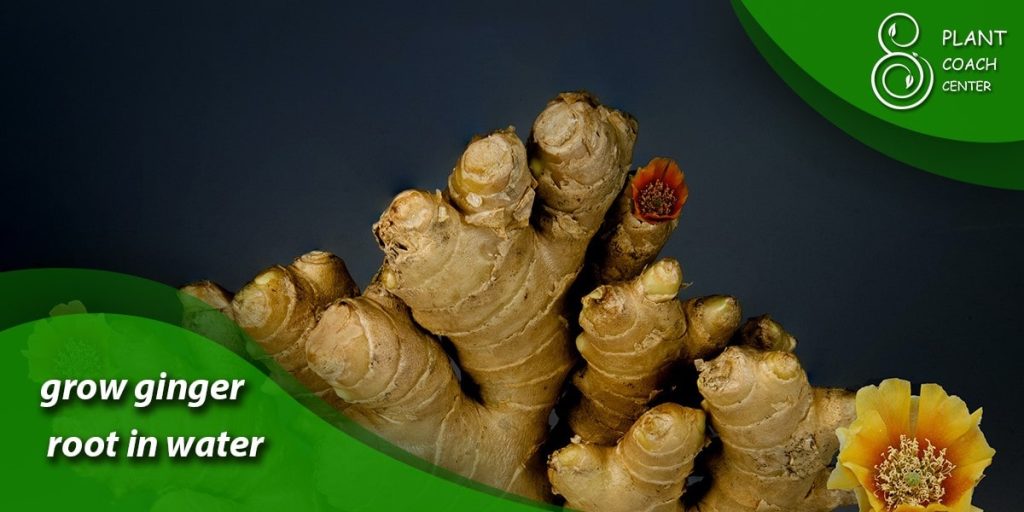
Patience is a Virtue
In ginger cultivation, patience is not just a virtue – it’s a necessity. From the moment you plant the rhizomes to the day you harvest the aromatic roots, embracing the gradual pace of ginger’s growth cycle is critical to a successful journey.
Initial Growth and Vigilance
After planting your ginger rhizomes, the initial growth phase requires attentive care. During this period, you’ll anxiously await the emergence of the first shoots. Remember that ginger sprouting can be slow and staggered, so keep going if your rhizomes do not sprout simultaneously. Regularly check the soil moisture and ensure the plants receive adequate light while avoiding direct exposure to harsh sunlight.
Leafy Lushness
As the shoots transform into lush, green leaves, your patience will be rewarded with a symphony of foliage. This is when the ginger plants channel their energy into establishing a robust root system beneath the soil. Be prepared for a few months of steady leaf growth before transitioning to the next phase.
Transition to Rhizome Development
The transition from foliage growth to rhizome development marks another lesson in patience. As the leaves start to yellow and wither, it’s a sign that the energy is shifting downward to nurture the roots. During this phase, resist the urge to overwater – the rhizomes need a drier environment to mature correctly.
Harvesting Time
Finally, the moment you’ve been waiting for arrives: harvesting time. It’s essential to exercise patience even in this exciting stage. Ginger’s flavor and aroma fully develop as the rhizomes mature, and rushing the process can result in underdeveloped roots. Wait until the leaves have wholly withered, indicating that the plant has channeled all its energy into the rhizomes. Gently dig up the ginger roots, reveling in the culmination of your patient care.

Signs of Readiness
The anticipation of harvesting your ginger roots is akin to waiting for a grand finale. However, just as a masterful performance has its cues and crescendos, so does determining when your ginger plants are ready for harvesting. Here are the signs to watch for:
Yellowing Leaves
One of the most significant signs that your ginger plants are approaching readiness is the yellowing and withering of their leaves. The leaves will fade as the plant redirects its energy from foliage to rhizome development. This shift indicates that the ginger roots are nearing their peak flavor and aroma.
Thin Skin and Fading Color
As the rhizomes mature, the skin thins, and the vibrant pinkish hues that new ginger exhibits fade. Mature ginger often develops a paler, beige color. This change in appearance signifies that the roots are concentrating their flavors.
Smell and Fragrance
One of the most rewarding signs of ginger’s readiness is its intoxicating fragrance. When the rhizomes are fully developed, they emit a strong, spicy aroma. Gently rub or scratch the skin of the ginger – if the scent is potent and aromatic, it’s a good indicator that the roots are ripe for harvesting.
Visible Rhizome Bumps
As you gently brush away the soil around the base of your ginger plants, you’ll notice the rhizomes’ characteristic bumps. Mature ginger rhizomes have pronounced knobby segments. Younger rhizomes might still feel smoother and less developed, so let patience guide you.
Harvesting Window
Ginger is usually ready for harvesting around 10 to 12 months after planting, though this can vary based on growing conditions and climate. Don’t rush the process – waiting for the right moment ensures you’ll savor ginger’s true essence in your culinary creations.
Conclusion
In the intricate world of ginger cultivation, where patience meets expertise and nature dances with time, your journey to becoming a ginger gardener has unfolded. From choosing the perfect season to savoring the signs of readiness, each step in this aromatic odyssey contributes to the tapestry of growing ginger.
As you nurture rhizomes into robust plants and leaves into flavorful roots, remember that your efforts will soon grace your kitchen with culinary delights and the satisfaction of a job well done. Whether cultivating ginger on a windowsill, amidst outdoor greenery, or embracing a greenhouse, the guidance provided here will ensure your success. So, head to PlantCouchCenter.com, where knowledge blooms alongside vibrant gardens, and embark on your ginger-growing adventure with confidence, eager to embrace the rewards of a journey well-tended.
When can I harvest ginger?
Around 10-12 months after planting, when leaves are yellow and rhizomes mature.
Can I grow ginger indoors?
Yes, with proper care, indoor cultivation creates a controlled, year-round growing environment.
What's the best climate for ginger?
Tropical or subtropical climates offer ideal conditions for ginger growth and continuous cultivation.


